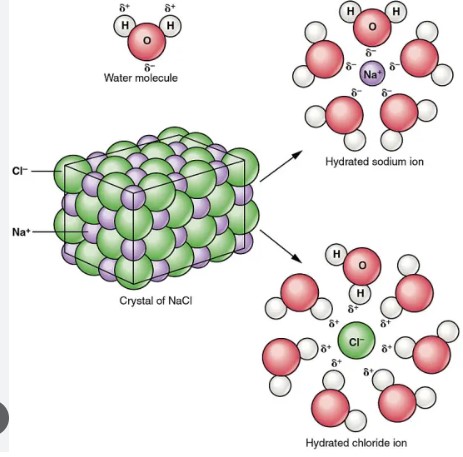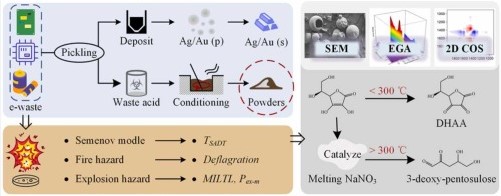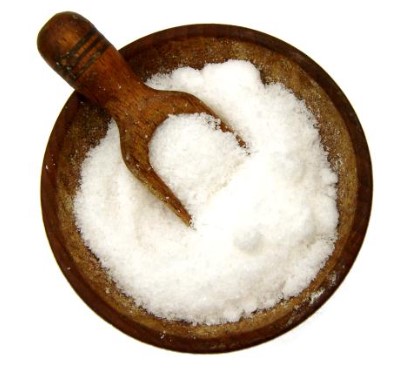Sodium nitrate and sodium nitrite, often found in the ingredients list of various food products and in industrial applications, play crucial roles in our daily lives and the global economy. Despite their similar names and chemical compositions, these compounds have distinct properties, uses, and impacts on health and the environment. The nuanced differences between them are not just of academic interest but have practical implications in fields ranging from food preservation to pharmaceuticals.
The main difference between sodium nitrate and sodium nitrite lies in their chemical structure and the roles they play in industrial and food processes. Sodium nitrate, with the chemical formula NaNO₃, serves primarily as a preservative and fertilizer, while sodium nitrite, NaNO₂, is used mainly in the curing of meat, preventing bacterial growth, and maintaining meat’s red color. Understanding these distinctions is vital for their safe and effective use in various industries.
These compounds’ relevance extends beyond their immediate applications. Sodium nitrate and sodium nitrite have nuanced roles in environmental cycles, human health, and technological advancements. Their proper management and use reflect broader themes in science and industry, such as sustainability, safety, and innovation, underscoring the importance of detailed knowledge about such seemingly simple chemical substances.

Basic Differences
At the heart of the matter, sodium nitrate and sodium nitrite share more than just similar names; they are integral to various industrial and food processing activities. Yet, their distinct chemical structures and applications set them apart in significant ways.
Chemical Structure
Sodium Nitrate
Chemically known as NaNO₃, sodium nitrate is composed of one sodium ion and one nitrate ion. Its structure is relatively simple, making it highly soluble in water and stable under most conditions.
Sodium Nitrite
Sodium nitrite, with the formula NaNO₂, differs from sodium nitrate by just one oxygen atom. However, this small difference significantly impacts its chemical reactivity and how it’s used in various applications.
Sodium Nitrate vs. Sodium Nitrite
The primary difference lies in their applications and effects. Sodium nitrate is often used as a fertilizer and preservative, offering a longer shelf life to foods by inhibiting the growth of microorganisms. Sodium nitrite, on the other hand, is crucial in curing meats; it prevents spoilage and maintains the red-pink color of the meat, making it appealing to consumers.
Historical Background
Discovery and Early Use
Sodium Nitrate
Historically, sodium nitrate was discovered in the vast natural deposits found in the deserts of Chile and Peru, famously known as the “Salitre.” Its use dates back several centuries, primarily as a component of gunpowder and later as a fertilizer in agriculture.
Sodium Nitrite
Sodium nitrite’s discovery followed that of sodium nitrate, with its synthesis from the latter. Initially, its applications were limited; however, its potent antimicrobial properties soon became invaluable in food preservation, especially in meat curing.
Evolution in Applications
From gunpowder to food preservation, the evolution in applications of both compounds is a testament to human ingenuity. Sodium nitrate’s role expanded into agriculture, boosting crop yields significantly. Sodium nitrite transformed food safety, especially in curing meats, preventing botulism, and enhancing flavors and colors in processed foods.
Properties and Characteristics
Physical Properties
Appearance
Both compounds are white to slightly yellowish crystalline solids. Their appearance is quite similar, making it challenging to distinguish between them without chemical testing.
Solubility
Sodium nitrate and sodium nitrite are highly soluble in water, a property that makes them ideal for use in various solutions in industrial and food processes. Their solubility plays a crucial role in their effectiveness as fertilizers and food preservatives.
Chemical Properties
Stability
Sodium nitrate is notably stable, decomposing only at very high temperatures to release oxygen. Sodium nitrite, while stable under most conditions, can react with secondary amines to form nitrosamines, some of which are carcinogenic, necessitating careful handling and application in food processing.
Reactivity
Sodium nitrite’s reactivity with hemoglobin is what prevents the growth of bacteria in meat products and maintains their desirable color. This reactivity, however, also underscores the importance of controlled usage to prevent the formation of harmful compounds.
Production and Sources
Sodium Nitrate
Natural Sources
The largest natural sources of sodium nitrate were the Chilean saltpeter deposits, which have been mined since the 16th century. These deposits formed over millions of years from decomposing organic material in arid conditions.
Industrial Production
Today, sodium nitrate is also produced industrially by neutralizing nitric acid with sodium carbonate or sodium bicarbonate. This method allows for the production of sodium nitrate with high purity, suitable for a wide range of applications.
Sodium Nitrite
Synthesis from Sodium Nitrate
One of the primary methods of producing sodium nitrite is through the reduction of sodium nitrate. This process involves heating sodium nitrate in the presence of a metal, such as lead or iron, which facilitates the removal of one oxygen atom, converting it into sodium nitrite.
Direct Industrial Methods
Alternatively, sodium nitrite can be synthesized directly by reacting nitrogen oxides with sodium hydroxide. This method provides a controlled and efficient means to produce sodium nitrite for use in various industries, especially in food processing where purity and consistency are crucial.

Applications
Food Industry
Preservatives
Sodium nitrate and sodium nitrite are key players in food preservation. They inhibit the growth of bacteria, such as Clostridium botulinum, which causes botulism, a potentially fatal illness. These compounds are particularly vital in the preservation of cured meats such as bacon, ham, and hot dogs. By preventing bacterial growth, they extend the shelf life of these products, making them safer and more accessible to consumers worldwide.
Color Fixatives
Beyond safety, sodium nitrite plays a crucial role in maintaining the appealing color of cured meats. It reacts with the meat’s myoglobin to create a bright red color, which is associated with freshness and quality by consumers. This reaction not only improves the product’s appearance but also enhances its taste, making sodium nitrite indispensable in the meat processing industry.
Industrial Uses
Fertilizers (Sodium Nitrate)
Sodium nitrate is a potent fertilizer, providing essential nutrients to plants, particularly nitrogen. This nutrient is critical for plant growth, contributing to photosynthesis and the synthesis of proteins. Sodium nitrate’s high solubility ensures that nitrogen is readily available to plants, making it a preferred choice in arid regions where water solubility enhances nutrient uptake.
Metal Treatment (Sodium Nitrite)
In the metal industry, sodium nitrite is used as a corrosion inhibitor, particularly in cooling systems and lubricants. It forms a protective oxide layer on metals, preventing rust and corrosion. This application is crucial in extending the lifespan of machinery and structures, highlighting sodium nitrite’s versatility beyond food preservation.
Other Applications
Pharmaceuticals
Both sodium nitrate and sodium nitrite have applications in the pharmaceutical industry. Sodium nitrite is used in treatments for cyanide poisoning, showcasing its life-saving potential. It reacts with cyanide to form harmless substances that are then excreted from the body, illustrating the compound’s utility in critical care scenarios.
Fire Suppression
Sodium nitrate is an effective component in fire suppression systems, particularly in powdered fire extinguishers. When heated, it decomposes and releases oxygen, which helps to fuel the combustion of the powder, effectively smothering the fire. This use underscores sodium nitrate’s role in safety and emergency response efforts.
Health and Safety Concerns
Sodium Nitrate
Exposure Risks
While sodium nitrate is essential in various applications, excessive exposure can pose health risks, such as an increased risk of certain diseases. However, when used properly and in regulated amounts, the benefits far outweigh the potential hazards.
Regulatory Guidelines
Regulations ensure that sodium nitrate’s use in food and industry is safe. For instance, the FDA and EU have specific guidelines on allowable levels in food products, ensuring consumer safety without compromising the benefits of sodium nitrate.
Sodium Nitrite
Toxicity and Safety Measures
Sodium nitrite, while useful, is toxic in high doses. It can lead to methemoglobinemia, a condition where the blood’s oxygen-carrying capacity is reduced. This underscores the need for strict adherence to safety guidelines in its use, particularly in food processing.
Use in Food and its Regulations
The use of sodium nitrite in food is regulated to ensure safety. Regulatory bodies, such as the FDA, set limits on its concentration in food products to minimize health risks while allowing for its benefits in food preservation and safety.
Environmental Impact
Ecosystem Exposure
The use of sodium nitrate and sodium nitrite can lead to environmental exposure, particularly in water bodies. Runoff from agricultural fields using sodium nitrate fertilizers can contribute to water pollution and eutrophication, impacting aquatic life.
Mitigation Strategies
Mitigation strategies involve the careful management of sodium nitrate and sodium nitrite use. For agriculture, practices such as precision farming and controlled release fertilizers can minimize environmental impact. In industrial applications, proper waste management and treatment can reduce environmental exposure.
Technological Innovations
New Uses and Developments
Research is ongoing into new uses and developments for sodium nitrate and sodium nitrite. Innovations in pharmaceuticals, energy storage, and even food technology are being explored, leveraging the unique properties of these compounds for modern applications.
Research Directions
The future of research into sodium nitrate and sodium nitrite looks at enhancing their benefits while minimizing potential drawbacks. Areas such as nanotechnology for targeted drug delivery and renewable energy storage solutions are just the beginning. The aim is to harness these compounds’ potential in sustainable, health-conscious ways, reflecting the evolving landscape of science and technology.
Frequently Asked Questions
Can sodium nitrate and sodium nitrite cause health problems?
Excessive intake of sodium nitrate or sodium nitrite can lead to health issues, including an increased risk of certain types of cancer and a condition called methemoglobinemia. However, when consumed in regulated amounts within food, the risks are significantly lowered, thanks to strict food safety standards.
Are sodium nitrate and sodium nitrite natural?
Sodium nitrate is naturally found in large quantities in the Earth’s soil and water, often mined from mineral deposits. Sodium nitrite, while less common in nature, can be produced by the bacterial reduction of sodium nitrate and is synthetically manufactured for use in various applications.
Why are sodium nitrate and sodium nitrite used in food?
Sodium nitrate and sodium nitrite are used in food processing, especially in curing meats, to prevent the growth of harmful bacteria, preserve the meat’s pink color, and enhance flavor. These compounds help extend shelf life and ensure food safety.
How can I avoid sodium nitrate and sodium nitrite in my diet?
To minimize intake of sodium nitrate and sodium nitrite, you can choose fresh or frozen meat and vegetables over processed foods, read labels carefully, and opt for products labeled as “nitrate-free” or “nitrite-free,” although it’s essential to note that some “natural” or “organic” alternatives might use celery juice, which contains naturally occurring nitrates.
Conclusion
The nuanced differences between sodium nitrate and sodium nitrite underscore the complexity of seemingly simple chemical compounds. Their distinct properties, applications, and impacts on health and the environment highlight the importance of informed use and regulation. As consumers and industry professionals navigate their choices, understanding these compounds’ roles can lead to safer, more sustainable practices.
Moreover, the ongoing research and technological innovations in utilizing these compounds point towards a future where their benefits can be harnessed more effectively while mitigating potential risks. As we advance, the key will be balancing utility with safety, ensuring that sodium nitrate and sodium nitrite continue to serve essential roles in our lives and industries without compromising health and ecological well-being.

